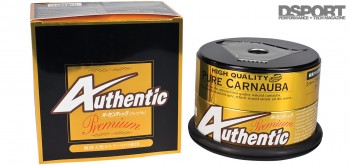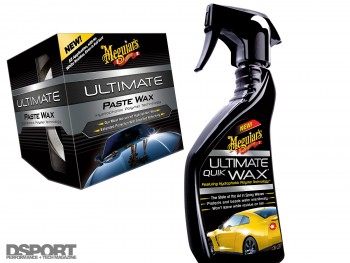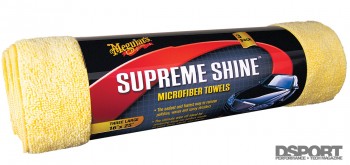 The Right Applicators
The Right Applicators
Sponges, terry cloth towels, diapers, cheesecloth and micro-fiber towels are just a few of the popular tools that are used to either apply or remove polishes, sealants or waxes. Which is best? The best starting point is to always start with the manufacturer’s recommendation for use. Nine times out of ten, this will give you the best results. If one cloth is recommended over another for your particular stage of application, and the manufacturer makes several types of applicators, rest assured that they’ve done their homework and know what will work best. Also, since not all paints are finished in the same manner and the condition of paints varies with age and abuse, you may want to experiment with what works best for you. As recommended by most manufacturers, always experiment on a small area or a surface not easily visible – the last thing you want is an errant abrasion mark in the center of your hood.
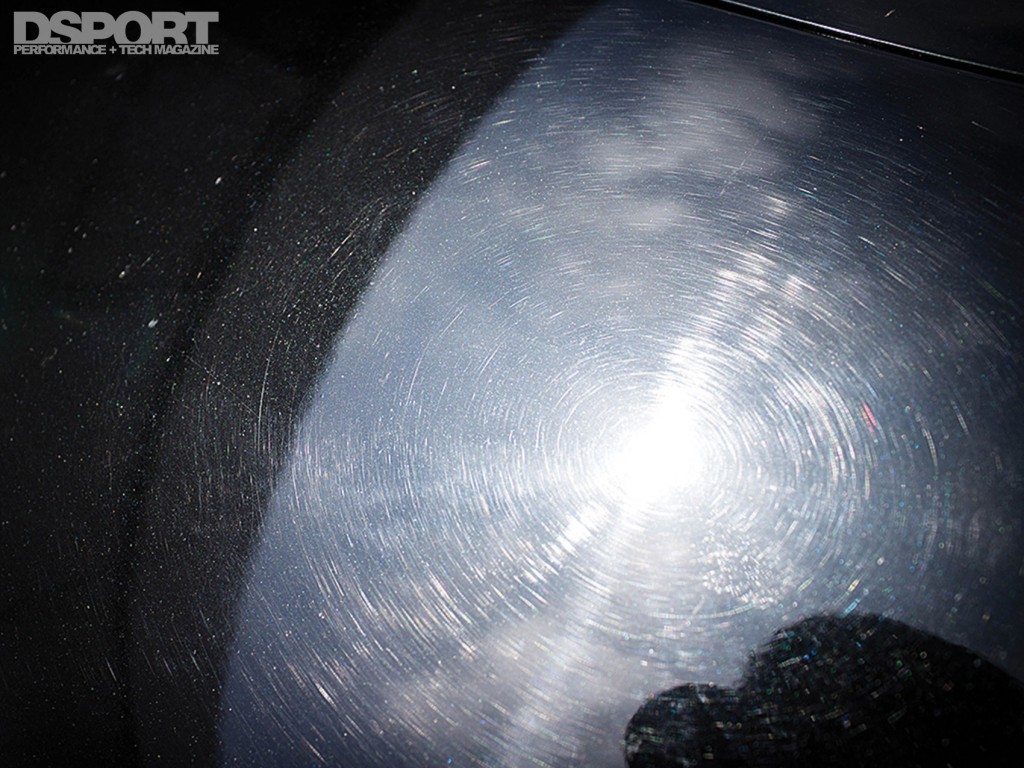 Holograms and swirls are usually created due to dirty applicators and towels. Be sure not to carry dirt from lower parts of the car across the paint.
Holograms and swirls are usually created due to dirty applicators and towels. Be sure not to carry dirt from lower parts of the car across the paint.
Polish
This stage can be a little confusing with all the different naming conventions used by car care product manufacturers. There are a few products that are advertised specifically as polishes. But for this step, we’ll consider all products that enhance a painted finish as a polish. This would include swirl mark removal products, glazes and true polishes. Now that your car’s paint is clean and free of contamination, this step will prepare the finish for a wax or wax-type product. This could mean cleaning or polishing the finish to remove oxidation, filling or gently removing swirl marks, enhancing your paint’s gloss or a combination of any of the above. 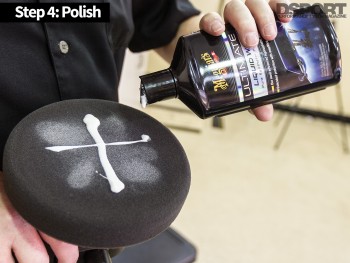 The need for this step depends on the quality of your existing finish. If you’re working on a new car, you may not need much polishing. However, if your paint job is beginning to show its age, then you’ll want to explore your options as far as different types of products you can use to enhance your paint’s shine. The main idea to keep in mind is that any polishing needs to be done immediately after decontamination because that is when your paint is the cleanest.
The need for this step depends on the quality of your existing finish. If you’re working on a new car, you may not need much polishing. However, if your paint job is beginning to show its age, then you’ll want to explore your options as far as different types of products you can use to enhance your paint’s shine. The main idea to keep in mind is that any polishing needs to be done immediately after decontamination because that is when your paint is the cleanest.
Seal & Protect
This last stage is also confusing to some with the different naming conventions used on the products. To keep this short, we’ll skip the details and discuss only sealants and waxes. The concept of a sealant or wax is to keep the good stuff in the paint and to keep the bad stuff off the paint. Generally, where the two differ is that a sealant refers to a synthetic or polymer wax-type product while waxes generally refer to carnauba- based wax. The advantages of synthetics or polymers are that they generally last longer. However, if you bring up this topic at an automotive detailers’ conference you’ll get an earful regarding the benefits of a carnauba-based wax. Some argue that a carnauba wax will provide a richer and deeper shine at the expense of durability. Others will even recommend the use of a sealant or synthetic wax and then a top coat of a carnauba- based wax. Some products even claim to provide increased shine with each additional coat. A quick check into any automotive internet forum will probably reveal at least a few claims of ten or twenty stage wax coats of a particular brand’s polish. There are also a number of products dubbed All-In-Ones (AIO) or cleaner waxes that are meant to provide a chemical polish with some durability.
No matter which product you chose, the idea of this stage is simple: now that you’ve decontaminated your paint, polished and enhanced your paint’s finish, you’ll want to apply a sealant or wax to lock in the shine and protect it from the environment. Your particular product or method choice is not important – what’s important is that you take the time to “lock in” all of your hard work with a final protecting coat.
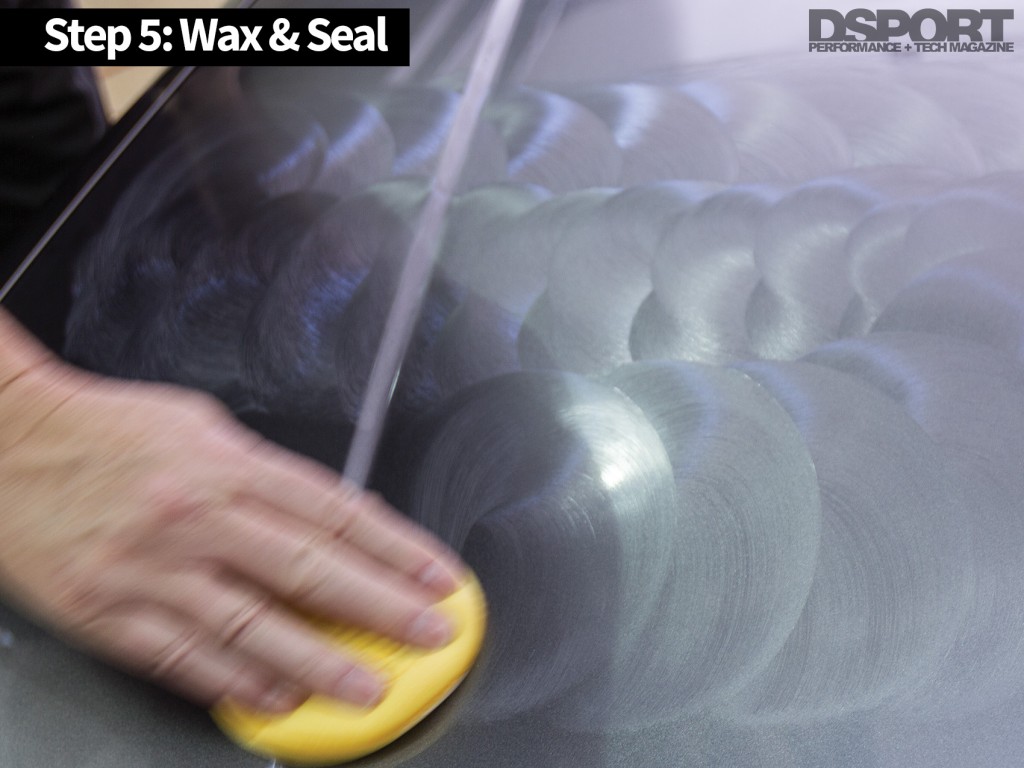 The waxing process can be done effectively by hand with a foam applicator. Applying too much wax can make it tough to buff off afterwards.
The waxing process can be done effectively by hand with a foam applicator. Applying too much wax can make it tough to buff off afterwards.
In-Between Waxing
Now that you’ve shown you can be serious when it comes to car care you’ll want to make sure you maintain your hard work by keeping it up as a regular routine. Technology has made many areas of our lives easier and car care is no exception. A few manufacturers have recently introduced post-wash spray on waxes. You simply spray the wax onto your wet car after you’ve washed it and wipe it off while drying your car. We wouldn’t recommend replacing any of the products or methods used in the Seal & Protect stage with just a spray wax, but these post-wash spray options can be excellent additions to your car care regiment.
Another popular product used to maintain the car’s shine between wax jobs is a spray-on quick detail. A quick detail spray is used to enhance the gloss from a wax or sealant after a wash and for the occasional touch-up and cleaning, usually required due to excessively dirty or dusty areas or falling biological contaminants from trees and birds. Keeping a bottle of spray detailer in the car at all times with micro-fiber towels can reduce the severity of finish damage resulting from bird and tree sap attacks or other contaminants.
Tuning The Finish
Not all paints are the same and the condition of paint varies with age and abuse. As a result, a product that delivers awesome results on you friend’s ’14 FR-S may not deliver the same degree of performance on your ‘91 Integra. You may find that a small degree of trial-and-error will be needed to find the best products for your vehicle. A great way to reduce this trial-and-error period is to contact the manufacturer of the product you are using and explain how the product is currently falling short. They may be able to recommend a different application process or maybe even a different product from their paint care line to do the trick. Now go get serious about car care.



